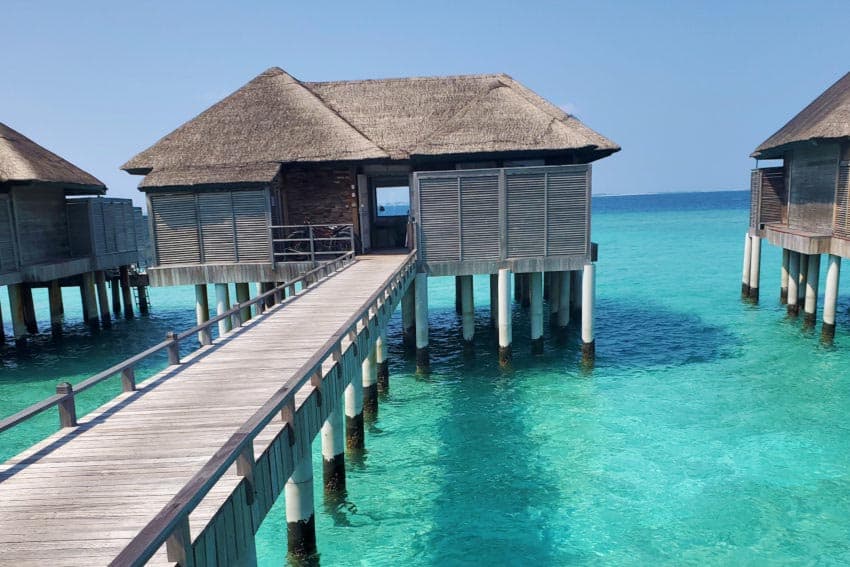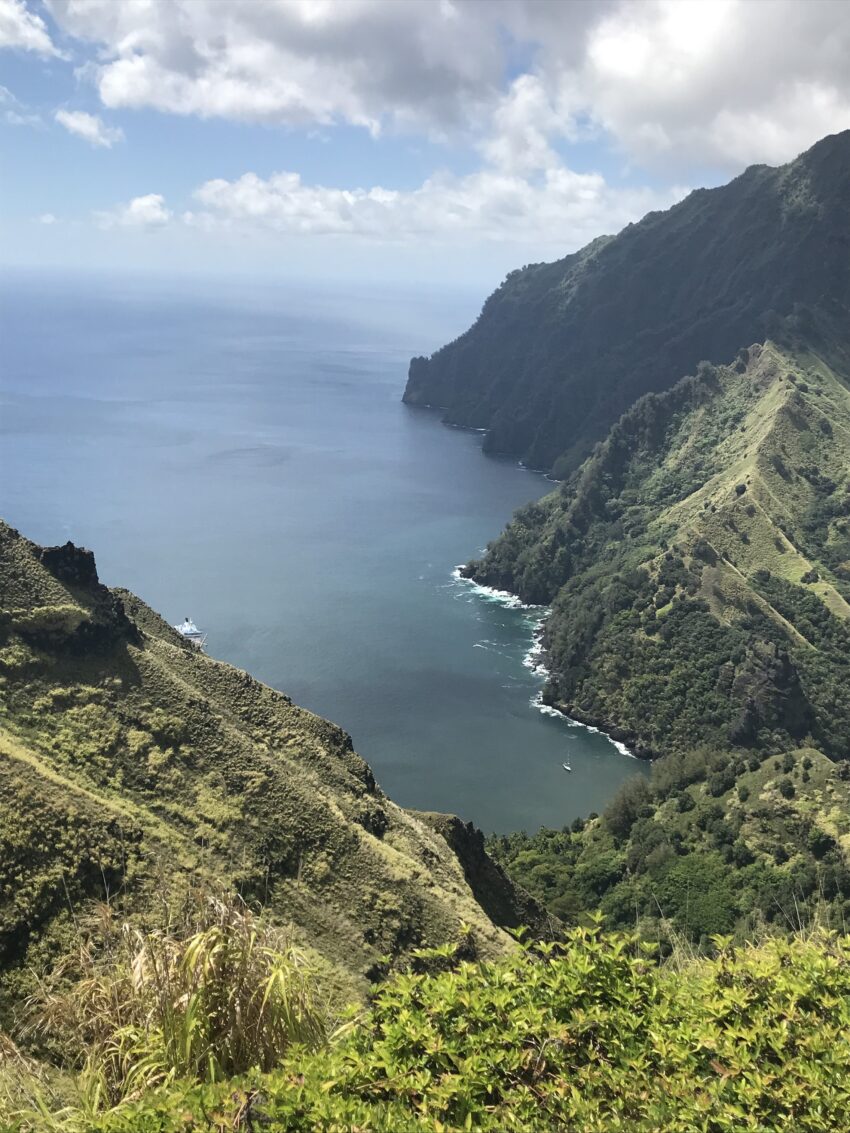
Cruising the Marquesas–Adrift in Gauguin’s Polynesian Paradise
By William Westermeyer
In 1842 Herman Melville abandoned the whaling ship Dolly as it was moored in Taioha’e Bay on the remote Pacific Island of Nuka Hiva. The Dolly had been in pursuit of sperm whales west of the Galapagos, and young Melville had had enough of the atrocious conditions aboard the ship.
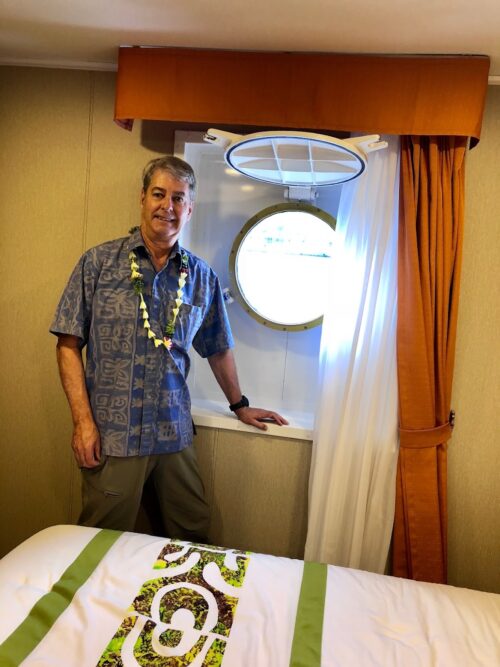
Conditions were so bad that he decided it would be better to trust his fate to an extremely uncertain future in the remote Marquesas Islands–one which might include encounters with cannibals–than to stay with the ship.
Melville, of course, eventually found his way home and went on to write Moby Dick. However, his experiences on Nuku Hiva resulted in Typee, his first book, now considered a classic in travel and adventure literature.
Visiting Nuka Hiva
While Typee is not a pure autobiography or entirely factual, it is a remarkably good read, and especially if one is approaching remote Nuka Hiva on one of the few ships that regularly visit the islands.
I was aboard the Aranui 5, the one-of-a-kind cargo/cruise ship that serves the six inhabited Marquesas Islands, a two-day cruise to the northeast of Papeete, Tahiti.
As we entered Taioha’e Bay, our first stop in the Marquesas, I could easily visualize Melville jumping ship and climbing for freedom over the dramatic green escarpment that comprised the backdrop of the bay.
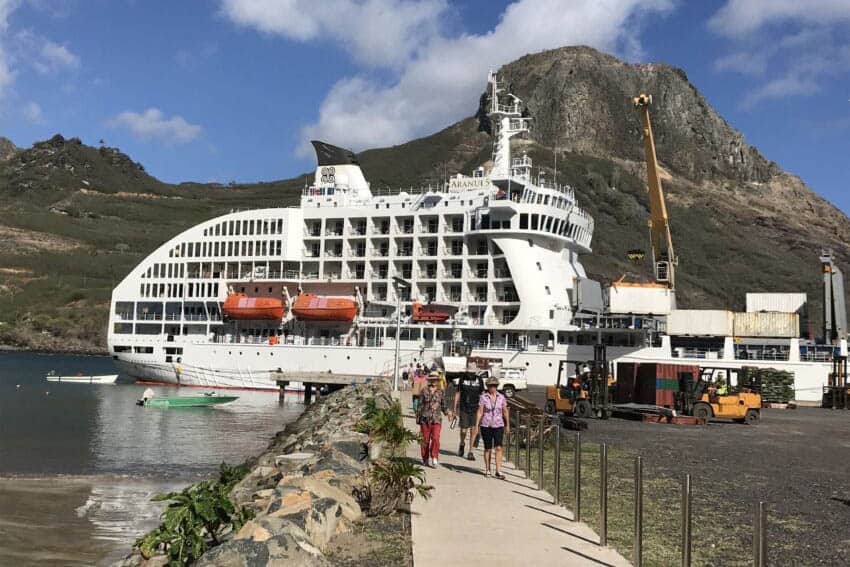
Our stay in these islands may not have been as fraught with uncertainty and danger as Melville’s, but it was certainly full of adventure and new experiences.
Something Different for the 25th
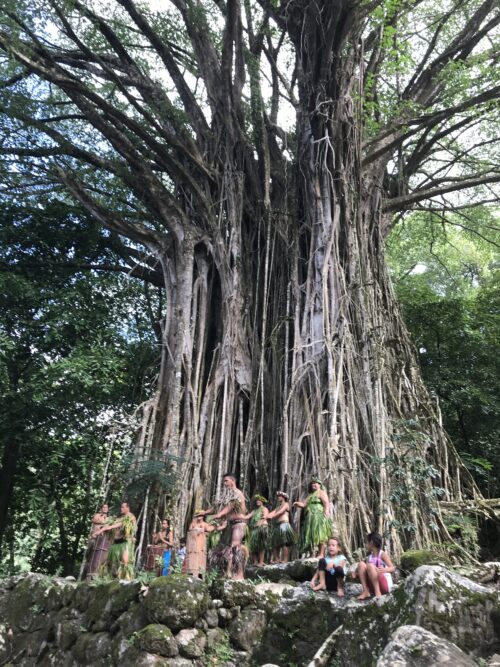
My wife Rosemary and I were looking for something different to celebrate our 25th wedding anniversary.
I’d been to the Pacific a number of times, but never to French Polynesia, which comprises not only the Society Islands where the better-known Tahiti, Moorea, and Bora Bora are located, but also the Austral, Gambier, Tuamotu, and Marquesas Island chains.
The Marquesas appealed to me because they were remote and relatively difficult to reach and because they had a unique Polynesian culture that had attracted French painter Paul Gauguin and Belgian singer Jacques Brel.
Famous Visitors
Moreover, the writers Robert Louis Stevenson, Somerset Maugham, and James Michener, among others, had also written vividly about French Polynesia. I wanted to see for myself what attracted these adventurous and talented writers to these islands.
The crew of the Aranui 5, mostly Polynesians, had planned either cultural or physical activities for us each day of the cruise. They were clearly proud of their islands and culture and wanted to show us the best of the Marquesas.

No day on any of the islands went without some new adventure, and few people, as far as we could tell, opted out of the activities.
Day Ashore on the Marquesas
Our days aboard ship typically began with breakfast shortly after sunrise at around 6:30 am. If we were in port at one of the islands, we spent most of the day ashore, typically visiting historical or archaeological sites and museums, hiking, or swimming.
On board ship, we enjoyed lectures; occasional entertainment, such as dancing and singing, staged by islanders and/or crew; and special events, such as a Polynesian evening. On one occasion, those passengers who had taken a Polynesian dancing course performed for us.
Tino, a native Polynesian, and the crew’s oldest member was one of our favorite crewmembers. He had been on all previous Aranui ships, that is 1, 2, and 3 (apparently 4 is considered an unlucky number by the Chinese owners of the ships). Tino had worked his way up from freight man to guide over the years.
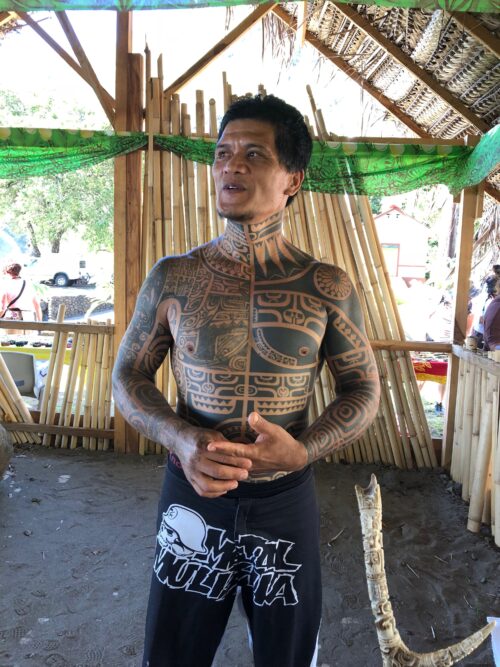
He was both informative and amusing as he told passengers about life both aboard ship and at home, which is usually only for four days between sailings.
Some of his comments about relations between the sexes were not exactly PC, as he freely spoke about his preference for the peace and quiet of life on the ocean to the constant chatter of his wife.
Before marrying, he had also enjoyed the relations of several European women, who had no doubt found him both exotic and engaging.
Aboard ship, he said, perhaps mostly in jest, that he preferred the company of any horses that might be in the hold to that of his shipmates.
Nevertheless, Tino had an appealing personality and well represented the friendliness and professionalism of other crew members.
Arriving at Nuku Hiva
Our first port of call in the Marquesas was Nuku Hiva, where the Aranui 5 entered the same small bay in which Melville’s ship the Dolly had moored in 1842.
After visiting the crafts center, my wife and I and Peter and Gill, a British couple with whom we often shared a dinner table, piled into a pickup truck and formed part of a caravan headed to the other side of the island.
We were roughly following the route that Melville had taken when he had fled across the mountains to Taivipai Bay, only this time the crossing was substantially easier.
Mary, our Marquesan driver, not only superbly navigated the sometimes-perilous roads, but she was very interested in telling us about her island.

We asked many questions, which she answered through a combination of limited English and French. One of the highlights of the day was a visit to an archaeological site at the center of which was an enormous banyan tree.
This dark and mysterious tree formed a perfect backdrop for the Marquesan dancers who demonstrated their traditional war dance.
The men were fierce and warlike and the women were voluptuous. Think of the dance the New Zealand All Blacks do to intimidate their rugby opponents, but in this shadowy setting the Marquesan dancers, most of whom were heavily tattooed, seemed even more fierce.
It’s true that the dancers were there to entertain us; however, music and dance are important in the lives of Marquesans, and most dances have special meaning for them.
Hiva Oa Archeological Site
The archaeological site on Nuku Hiva was one of several that we visited during our visit to these islands. At similar sites on Hiva Oa and Ua Huka we visited tikis–stone images of Polynesian supernatural powers–that were hundreds of years old.
Some were almost as large as those on Easter Island. While Catholic missionaries had done their best to stamp out belief in the power of the tikis (and indeed the Catholic church now enjoys a central role in the lives of most Marquesan Islanders), the sites we visited seemed to retain a spiritual power, or what Marquesans call mana.
Importantly, among Marquesans, there has been a renewed interest in traditional ways, and the Catholic church has moderated its views on practices it once prohibited.
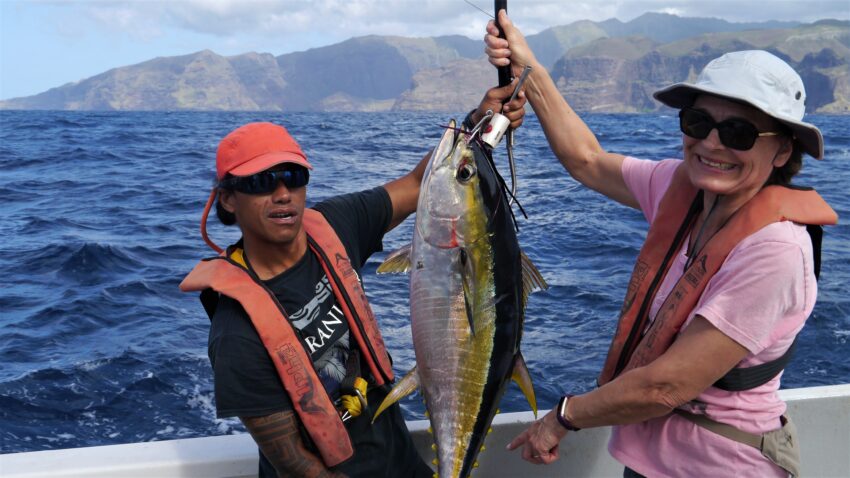
For example, tattooing has once again become widespread as an expression of pride in Marquesan culture. Also, although we never attended a church service, we noted that in several churches large drums were employed in the service, thus melding Catholic and Polynesian musical sensibilities.
Hiva Oa was also the island where both Paul Gauguin and Jacques Brel called home for several years. We had a choice of either taking a bus to the small village of Atuona or walking there. We chose the roughly 4km walk, as it gave us an opportunity to climb to a point high above Atuona for impressive views of the village below and of the Pacific Ocean beyond.

We passed by many Marquesan homes along the way, which we were curious to inspect. Most were relatively small by our standards, but they nevertheless looked very comfortable.
The climate in the Marquesas allows for outdoor living much of the time. As we walked, we also passed numerous fruit trees.
Banana, mango, coconut, grapefruit, and breadfruit trees were everywhere, making us think that it is possible to subsist on these islands on fruit and fish alone. Occasional signs that warned us to watch out for falling coconuts were to be taken seriously.
Just before our final descent to Atuona we reached Calvary Cemetery, where both Gauguin and Brel are buried.
It’s hard to think of a more idyllic and peaceful site for a final resting place for these most original individuals, who, it seems, settled in these remote islands in part to escape the stresses and aggravations of their native countries. In Atuona we spent considerable time in the Paul Gauguin Cultural Center.
Gauguin in the Marquesas
We saw many reproductions of Gauguin’s paintings (no originals as far as we know) as well as the reconstructed home and studio where Gauguin lived and worked.
On the same site was a memorial to Jacques Brel, complete with his airplane, Jojo, in a hangar of its own. Brel had used the plane to ferry essential medical and other supplies around the islands, as well as islanders themselves when they were so ill that they needed medical care back in Tahiti.
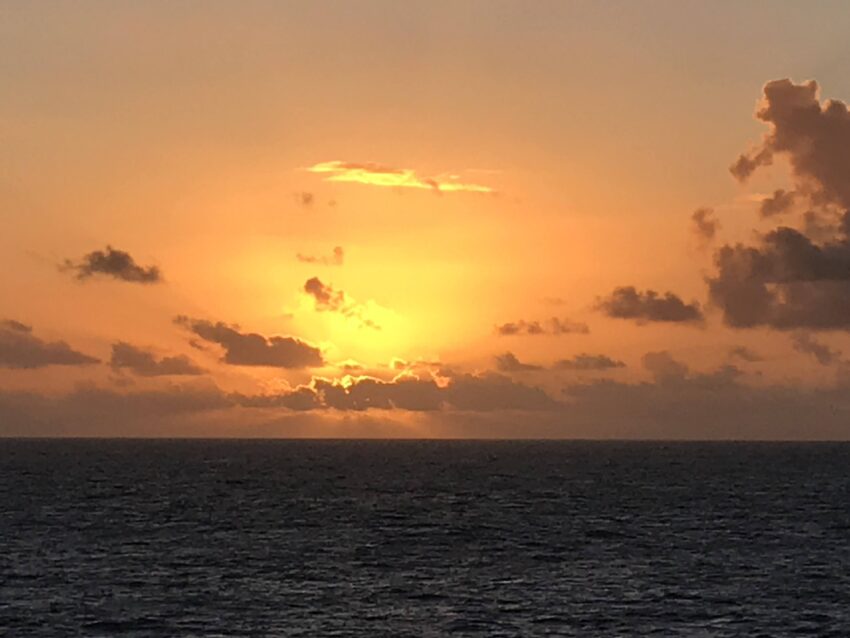 A voyage such as ours on the Aranui 5 provides many opportunities for new experiences, and we were determined to take advantage of as much as we could.
A voyage such as ours on the Aranui 5 provides many opportunities for new experiences, and we were determined to take advantage of as much as we could.
Trying out Deep Sea Fishing
Neither my wife nor I had been deep-sea fishing before, so we decided to give it a try. Our small fishing boat, the Mokai Nu 2, was lowered from the Aranui 5 as it was docked for the second time in Taioha’e Bay.
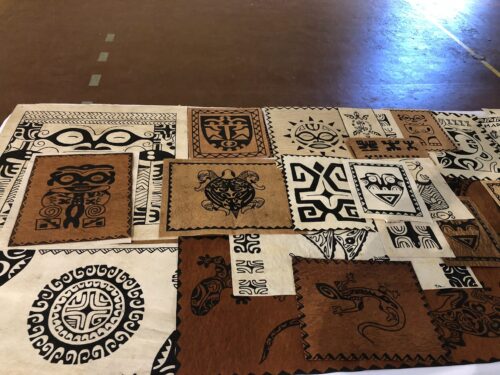
Both our boat captain, Antoine, and our fishing expert, Jean, lived on the nearby island of Ua Pou. As we headed out to sea, Antoine scanned the horizon for seabirds, such as noddies, brown boobies, frigatebirds, and shearwaters.
Both the birds and the larger fish would be after the same meal–smaller fish near the surface–so where the birds were feeding, we might hope to find bonito, yellowfin tuna, and wahoo.
Jean set four lines for trolling, two from large reels on either side of the boat, and two smaller lines that could be pulled in by hand.
Rosemary was the first to catch a fish, a 4-kilogram bonito. She was excited as she pulled the line hand-over-hand until the bonito got close, at which point Jean lifted it into the boat. I caught another bonito a few minutes later on the other hand line.
The real excitement came, however, when one of the big rods bent suddenly and Rosemary, being nearest to it, began reeling in what turned out to be a 25-kilogram yellowfin tuna. It took all of her strength to reel in the tuna, and again Jean helped her to get it into the boat.
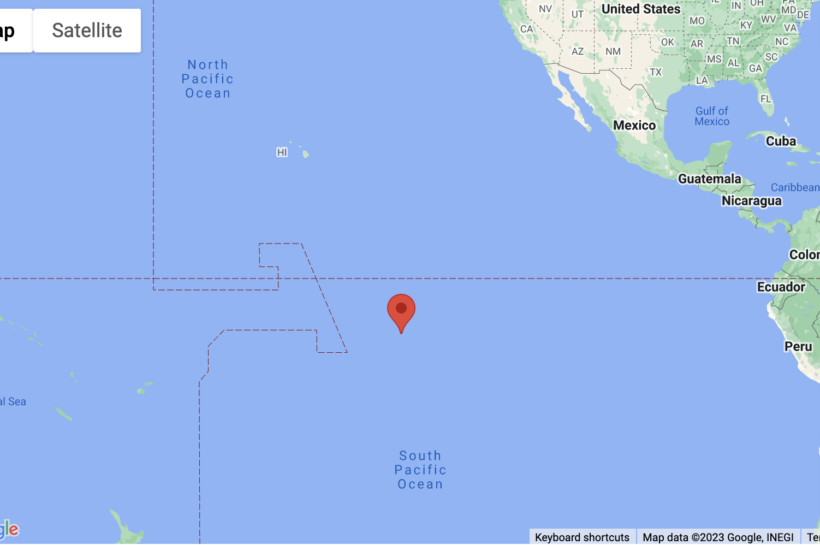
Back aboard the ship, the chef prepared our fish, and all four passengers aboard the fishing boat that day were allowed to invite guests to a special fisherman’s dinner the following night. The fish was as fresh and delicious as any we have ever eaten. The chef prepared tuna surimi for the first course and tuna in a vanilla sauce for the main course.
 Fish Could Feed The Table
Fish Could Feed The Table
The fish we caught could easily have fed many more than the 12 people at our table, and what wasn’t served to us was probably enjoyed by the crew.
Although we ate as much as we could, we were unable to eat all that was brought to us. Our Polynesian waitress admonished us for this, so we shared some of our bounty with other nearby passengers.
A specialty of the island of Fatu Hiva to the southeast of Nuku Hiva was the making of tapa from the bark of mulberry, breadfruit, and banyan trees.
Here, we saw women in the village of Omoa demonstrate the process, which entails soaking and beating the inner bark of these trees and stretching it out so that it can then be painted on.
The distinctive Marquesan designs painted include geometrical patterns, tikis, and animals such as turtles. The mulberry tree produces a cream-colored tapa, while breadfruit trees produce a light brown tapa, and banyan trees a dark brown tapa. I found them all beautiful and bought one of each.

The real adventure on Fatu Hiva was our hike from Omoa to Hanavave, the two main villages on the island, both located in impossibly beautiful valleys filled with banana, breadfruit, mango, coconut, and other fruit trees. About 40 of the 200 passengers aboard the Aranui 5 elected to do this 10-mile hike.
The first half of the hike was a steady uphill grind of about 600 meters. The crew of the Aranui 5 had prepared lunch for us at the high point of the walk and also supplied us with extra water. In other words, they took good care of us—they clearly did not want to see any of their passengers go astray in the mountains of Fatu Hiva.
The best views were on the second half of the walk, where we could see the Aranui 5 now moored in Hanavave Bay far below us and the Pacific filling the horizon to such an extent that we could even discern the curvature of the Earth. Surrounding us were jagged peaks, carpeted in green all the way to their near-vertical summits.
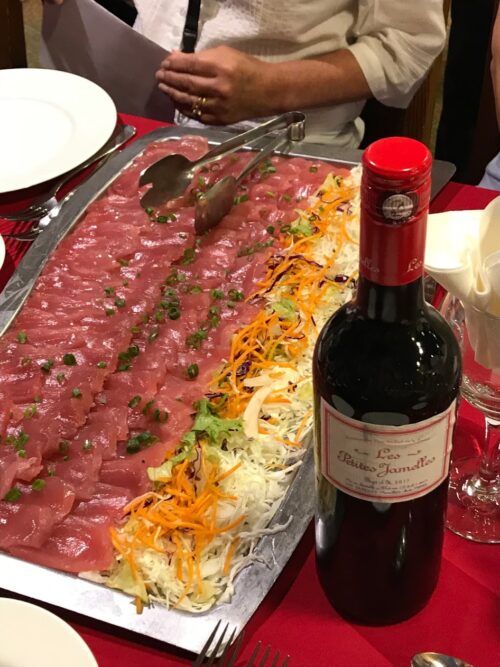
I joined Rosemary and our new friend Nancy on the downhill stretch as we stopped to look at flowers, fruit trees, a bareback horseman wearing flip flops, and ever-changing views of the ocean.
At one point we passed an abandoned tractor that had clearly been used to create the road between the two villages on which we were hiking but was now being slowly overtaken by green vegetation growing up through its treads.
It is likely that most of us have a romanticized vision of South Pacific islands, perhaps from reading such books as Michener’s Tales of the South Pacific or Return to Paradise.
The reality can be quite different, which is especially obvious when encountering the grittiness of the port of Papeete or its disagreeable traffic.
The Marquesas Islands, however, came as close as possible to meet my no doubt unrealistic expectations of what Polynesian Islands and Polynesian people should be like. Perhaps this is why Paul Gauguin and Jacques Brel spent their final days on Hiva Oa.
Low Key, Low-Stress Paradise
They apparently experienced a low-key, low-stress island paradise that enabled them to live inexpensively and free from the stresses of the modern world. It is also possible to perceive the Marquesas as an insignificant group of isolated islands stranded in the middle of the Pacific, cut off from the concerns of the vast majority of us.
But for us, if not for the Marquesans themselves, who seem to be doing very well on their own, this is surely part of the appeal of these islands. Much has changed since Melville first visited the Marquesas.
In particular, tourists have long since replaced the whalers. While a certain amount of tourism is surely a boon to the Marquesas Islands, I hope that they can remain largely as they are now, a part of the modern world, yes, but also a place where all can still experience life at a gentler pace.
More change is clearly coming, however: on the one day we went deep sea fishing we noticed another ship in the far distance. This ship, we were told, was laying an undersea cable that would soon enable much better Internet access to the islands…
 William Westermeyer, now residing in Boulder, Colorado has visited close to 100 countries in a career dealing with international environmental issues. He enjoys writing about wide-open and out-of-the-way spaces throughout the world but especially in the American West. He has previously worked for both the U.S. Congress in Washington, DC and the World Meteorological Organization in Geneva, Switzerland.
William Westermeyer, now residing in Boulder, Colorado has visited close to 100 countries in a career dealing with international environmental issues. He enjoys writing about wide-open and out-of-the-way spaces throughout the world but especially in the American West. He has previously worked for both the U.S. Congress in Washington, DC and the World Meteorological Organization in Geneva, Switzerland.
- Missouri Sports Travel Adventure: From Landmarks to Ballparks - January 21, 2026
- What First-Time Visitors Get Wrong About Visiting Iceland - January 15, 2026
- Bareboat Charter vs all-inclusive Crewed: Which Luxury Charter Fits You? - December 29, 2025



